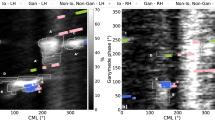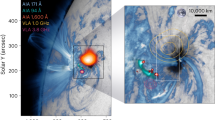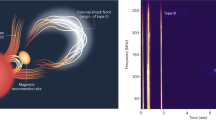Abstract
DURING the early morning hours of March 8, 1958, the planet Jupiter was under observation by a total of five different receiving arrays at the University of Florida Radio Observatory. Two of these arrays operated at a frequency of 18 Mc./s., two at 22.2 Mc./s., and one at 27.6 Mc./s. Both pen recording and aural monitoring of the signals by an observer were employed. At 0235 U.T. an unusual event began simultaneously on all five channels, consisting of a single very intense burst of noise which slowly rose to a maximum, and even more slowly declined over a total period of about 2 min. During this interval the observer was able to obtain an excellent record of the polarization of the disturbance with the 22.2 Mc./s. polarimeter, which was kept in stand-by condition during all periods of observation.
This is a preview of subscription content, access via your institution
Access options
Subscribe to this journal
Receive 51 print issues and online access
$199.00 per year
only $3.90 per issue
Buy this article
- Purchase on SpringerLink
- Instant access to full article PDF
Prices may be subject to local taxes which are calculated during checkout
Similar content being viewed by others
References
Carr, T. D., Smith, A. G., Pepple, R., and Barrow, C., Astrophys. J., 127, 274 (1958).
Pawsey, J. L., and Bracewell, R. N., “Radio Astronomy”, 310 (Oxford University Press, 1955).
Wells, H. W., Proc. Inst. Rad. Eng., 46, 610 (1958).
Author information
Authors and Affiliations
Rights and permissions
About this article
Cite this article
SMITH, A., CARR, T. & PERKINS, W. Anomalous Night-Time Reception of a Major Solar Radio Burst. Nature 183, 597–598 (1959). https://doi.org/10.1038/183597a0
Issue date:
DOI: https://doi.org/10.1038/183597a0
This article is cited by
-
Night-time reception of solar radio bursts over wide bandwidths
Earth, Moon, and Planets (1987)
-
Night-time reception of solar radio events
Nature (1977)
-
Night-time reception of a solar radio event
Nature (1976)



